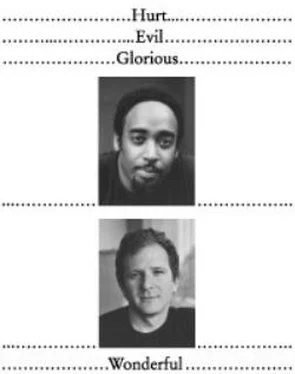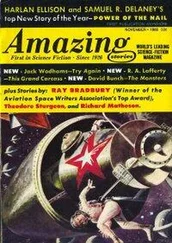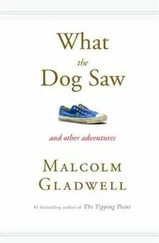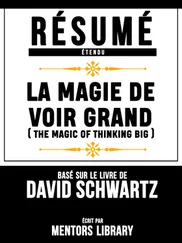Malcolm Gladwell - Blink - The Power of Thinking Without Thinking
Здесь есть возможность читать онлайн «Malcolm Gladwell - Blink - The Power of Thinking Without Thinking» весь текст электронной книги совершенно бесплатно (целиком полную версию без сокращений). В некоторых случаях можно слушать аудио, скачать через торрент в формате fb2 и присутствует краткое содержание. Жанр: Культурология, Психология, на английском языке. Описание произведения, (предисловие) а так же отзывы посетителей доступны на портале библиотеки ЛибКат.
- Название:Blink: The Power of Thinking Without Thinking
- Автор:
- Жанр:
- Год:неизвестен
- ISBN:нет данных
- Рейтинг книги:3 / 5. Голосов: 1
-
Избранное:Добавить в избранное
- Отзывы:
-
Ваша оценка:
- 60
- 1
- 2
- 3
- 4
- 5
Blink: The Power of Thinking Without Thinking: краткое содержание, описание и аннотация
Предлагаем к чтению аннотацию, описание, краткое содержание или предисловие (зависит от того, что написал сам автор книги «Blink: The Power of Thinking Without Thinking»). Если вы не нашли необходимую информацию о книге — напишите в комментариях, мы постараемся отыскать её.
Blink: The Power of Thinking Without Thinking — читать онлайн бесплатно полную книгу (весь текст) целиком
Ниже представлен текст книги, разбитый по страницам. Система сохранения места последней прочитанной страницы, позволяет с удобством читать онлайн бесплатно книгу «Blink: The Power of Thinking Without Thinking», без необходимости каждый раз заново искать на чём Вы остановились. Поставьте закладку, и сможете в любой момент перейти на страницу, на которой закончили чтение.
Интервал:
Закладка:
I imagine that some of you, particularly those who are diehard cola drinkers, are bristling at this point. I’m being a bit insulting. You think you really do know your way around Pepsi and Coke. Okay, let’s concede that you can reliably tell Coke from Pepsi, even when the DOD hovers around 4. In fact, I urge you to test yourself. Have a friend pour Pepsi into one glass and Coke into another and try to tell them apart. Let’s say you succeed. Congratulations. Now let’s try the test again, in a slightly different form. This time have your tester give you three glasses, two of which are filled with one of the Colas and the third with the other. In the beverage business, this is called a triangle test. This time around, I don’t want you to identify which is Coke and which is Pepsi. All I want you to say is which of the three drinks is not like the other two. Believe it or not, you will find this task incredibly hard. If a thousand people were to try this test, just over one-third would guess right—which is not much better than chance; we might as well just guess.
When I first heard about the triangle test, I decided to try it on a group of my friends. None of them got it right . These were all well-educated, thoughtful people, most of whom were regular cola drinkers, and they simply couldn’t believe what had happened. They jumped up and down. They accused me of tricking them. They argued that there must have been something funny about the local Pepsi and Coke bottlers. They said that I had manipulated the order of the three glasses to make it more difficult for them. None of them wanted to admit to the truth: their knowledge of colas was incredibly shallow. With two colas, all we have to do is compare two first impressions. But with three glasses, we have to be able to describe and hold the taste of the first and then the second cola in our memory and somehow, however briefly, convert a fleeting sensory sensation into something permanent—and to do that requires knowledge and understanding of the vocabulary of taste. Heylmun and Civille can pass the triangle test with flying colors, because their knowledge gives their first impressions resiliency. My friends were not so fortunate. They may drink a lot of cola, but they don’t ever really think about colas. They aren’t cola experts, and to force them to be—to ask too much of them—is to render their reactions useless.
Isn’t this what happened to Kenna?
After years of starts and stops, Kenna was finally signed by Columbia Records. He released an album called New Sacred Cow. Then he went on his first tour, playing in fourteen cities throughout the American West and Midwest. It was a modest beginning: he opened for another band and played for thirty-five minutes. Many people in the audience didn’t even realize that he was on the bill. But once they heard him play, they were enthusiastic. He also made a video of one of his songs, which was nominated for an award on VH-1. College radio stations began playing New Sacred Cow, and it started to climb the college charts. He then got a few appearances on television talk shows. But the big prize still eluded him. His album didn’t take off because he couldn’t get his first single played on Top 40 radio.
It was the same old story. The equivalent of Gail Vance Civille and Judy Heylmun had loved Kenna. Craig Kallman heard his demo tape and got on the phone and said, “I want to see him now .” Fred Durst heard one of his songs over the telephone and decided that this was it . Paul McGuinness flew him to Ireland. The people who had a way to structure their first impressions, the vocabulary to capture them, and the experience to understand them, loved Kenna, and in a perfect world, that would have counted for more than the questionable findings of market research. But the world of radio is not as savvy as the world of food or the furniture makers at Herman Miller. They prefer a system that cannot measure what it promises to measure.
“I guess they’ve gone to their focus groups, and the focus groups have said, ‘No, it’s not a hit.’ They don’t want to put money into something that doesn’t test well,” Kenna says. “But that’s not the way this music works. This music takes faith. And faith isn’t what the music business is about anymore. It’s absolutely frustrating, and it’s overwhelming as well. I can’t sleep. My mind is running. But if nothing else, I get to play, and the response from the kids is so massive and beautiful that it makes me get up the next day and fight again. The kids come up to me after the show and say, ‘It sucks what the record companies are doing to you. But we’re here for you, and we’re telling everybody.’”
SIX. Seven Seconds in the Bronx: The Delicate Art of Mind Reading
The 1100 block of Wheeler Avenue in the Soundview neighborhood of the South Bronx is a narrow street of modest two-story houses and apartments. At one end is the bustle of Westchester Avenue, the neighborhood’s main commercial strip, and from there, the block runs about two hundred yards, flanked by trees and twin rows of parked cars. The buildings were built in the early part of the last century. Many have an ornate façade of red brick, with four- or five-step stoops leading to the front door. It is a poor and working-class neighborhood, and in the late 1990s, the drug trade in the area, particularly on Westchester Avenue and one street over on Elder Avenue, was brisk. Soundview is just the kind of place where you would go if you were an immigrant in New York City who was looking to live somewhere cheap and close to a subway, which is why Amadou Diallo made his way to Wheeler Avenue.
Diallo was from Guinea. In 1999, he was twenty-two and working as a peddler in lower Manhattan, selling videotapes and socks and gloves from the sidewalk along Fourteenth Street. He was short and unassuming, about five foot six and 150 pounds, and he lived at 1157 Wheeler, on the second floor of one of the street’s narrow apartment houses. On the night of February 3, 1999, Diallo returned home to his apartment just before midnight, talked to his roommates, and then went downstairs and stood at the top of the steps to his building, taking in the night. A few minutes later, a group of plainclothes police officers turned slowly onto Wheeler Avenue in an unmarked Ford Taurus. There were four of them—all white, all wearing jeans and sweatshirts and baseball caps and bulletproof vests, and all carrying police-issue 9-millimeter semiautomatic handguns. They were part of what is called the Street Crime Unit, a special division of the New York Police Department, dedicated to patrolling crime “hot spots” in the city’s poorest neighborhoods. Driving the Taurus was Ken Boss. He was twenty-seven. Next to him was Sean Carroll, thirty-five, and in the backseat were Edward McMellon, twenty-six, and Richard Murphy, twenty-six.
It was Carroll who spotted Diallo first. “Hold up, hold up,” he said to the others in the car. “What’s that guy doing there?” Carroll claimed later that he had had two thoughts. One was that Diallo might be the lookout for a “push-in” robber—that is, a burglar who pretends to be a visitor and pushes his way into people’s apartments. The other was that Diallo fitted the description of a serial rapist who had been active in the neighborhood about a year earlier. “He was just standing there,” Carroll recalled. “He was just standing on the stoop, looking up and down the block, peeking his head out and then putting his head back against the wall. Within seconds, he does the same thing, looks down, looks right. And it appeared that he stepped backwards into the vestibule as we were approaching, like he didn’t want to be seen. And then we passed by, and I am looking at him, and I’m trying to figure out what’s going on. What’s this guy up to?”
Читать дальшеИнтервал:
Закладка:
Похожие книги на «Blink: The Power of Thinking Without Thinking»
Представляем Вашему вниманию похожие книги на «Blink: The Power of Thinking Without Thinking» списком для выбора. Мы отобрали схожую по названию и смыслу литературу в надежде предоставить читателям больше вариантов отыскать новые, интересные, ещё непрочитанные произведения.
Обсуждение, отзывы о книге «Blink: The Power of Thinking Without Thinking» и просто собственные мнения читателей. Оставьте ваши комментарии, напишите, что Вы думаете о произведении, его смысле или главных героях. Укажите что конкретно понравилось, а что нет, и почему Вы так считаете.












